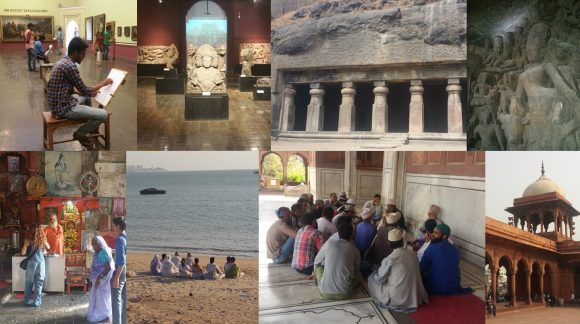
India International Experience 2016: A Highlight of the MBA Journey
In March, Yale MBA students traveled to various locations as part of the International Experience course. The course begins with a half semester of classroom study and culminates in a 10-day trip to one or more business capitals. Andrew Kirk '17 reflects on the International Experience to India.
In line with its global-focused philosophy, Yale School of Management runs an incredible program called the International Experience. Having signed up for the India program, I was able to spend three months rigorously preparing for the trip by studying diverse historical, cultural, and business topics. This allowed me to form hypotheses about the country and its peoples, which could be confirmed, rejected, or refined over three weeks in-country. We had the rare opportunity to meet executives and founders, entrepreneurs, investors, and government officials—as well as local peoples across all walks of life.
Upon returning from this life-altering business and personal journey throughout India, the prevailing question from peers and family was, “What was India like?” I was uniquely at a loss for words, and instead had flurries of images, stories, and thoughts in my mind seemingly impossible to articulate. After weeks of state-side reflection, I could finally articulate why articulating had been so difficult. The one word that summarizes my Indian experience is dichotomy—because each of my experiences had a counterpart.
Related to history and culture, there was a tremendous sense of India’s rich history wherever I visited—from world-class museums and art districts to ancient heritage sites, like Mumbai’s Elephant Caves. Religious centers and activities were intertwined as a core part of the vibrant cities, with active Hindu, Sikh, and Muslim communities seemingly living in peace and harmony in daily life. However, access to these sites seemed to be a luxury. With ticket prices several times higher than average daily wages, hundreds of locals sat outside the security gates, and I wonder if they were ever able to experience this history that was theirs. Ancient temples contrasted with European stucco-dominated urban skylines, while men wearing western dress shirts accompanied women in full saris, and occasionally free-roaming cows strutted down modern beach boardwalks—all accentuating this dichotomy of modern versus traditional culture and society.

Related to societal opportunity and development, India boasted some of the world’s top universities, leading technology innovations on a global scale, robust infrastructure and construction, and flourishing formal retail. Every morning I saw hundreds of uniformed school children heading to school, oftentimes accompanied by proud smiling parents. One couldn’t help but be hopeful for the nation’s future with such a strong focus on education and youth culture. However, in the midst of this wealth I witnessed abject poverty. Homeless families bordered beautiful parks. Harbors hosted both yachts and fishing boats, beautifully designed stations housed trains with no doors, and vast, numerous slums sat at the base of luxury condo developments. Many school-aged children throughout the day were idle, begging, or working. The government’s policy of universal primary education seemed far from reality. There certainly will be a strong base of young future leaders, but there also seems that many of the country’s advancements will not reach a very large group of people who are starting out very far behind in life.

Related to the business environment, we had the opportunity to visit an international luxury men’s dress shirt textile company with best-in-class lean manufacturing; the country’s largest energy and telecom companies, Reliance and Tata; and innovative former startups like Infosys and Biocon. Overall, there was strong optimism for India’s future growth at the intersection of business and society—with development reaching even the most at-risk segments. However, the vast majority of India’s workers, businesses, and commerce were in the informal sector, showcased in India’s vibrant street market culture. Central Delhi hosted what seemed like an entirely separate economy in a single square mile of informal structures—food, construction, auto, paper, and almost every industry you could imagine. Bangalore hosted a busy evening spice market under tarps and cardboard signs. Mumbai’s wholesale produce, textile, and flower markets were key parts of the city’s economy. India’s formal sector business must factor in these critical informal sector jobs and goods distribution as the country seeks to advance.

This IE India experience was truly a once-in-a-lifetime opportunity to dive headfirst into this fascinating country. I gained so much perspective on India’s rich culture, society, and business environment. With the leadership of our brilliant TAs and rich mentorship from Dean Jain throughout the program, this easily ranks as one of the true highlights of my MBA and life journey.
